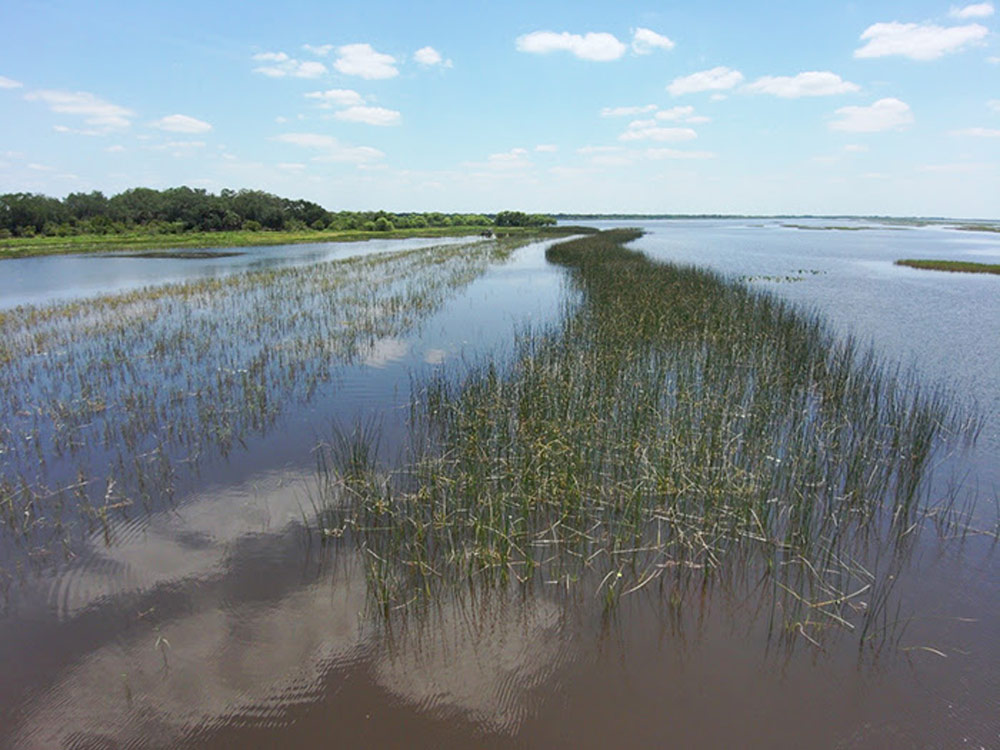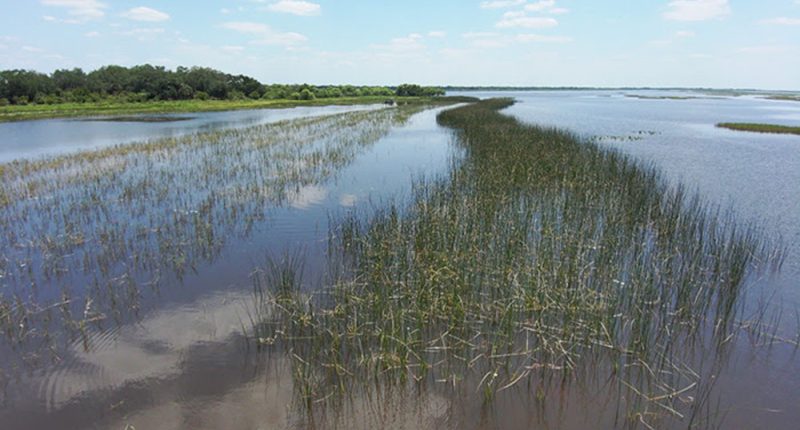
The Florida Fish and Wildlife Conservation Commission (FWC) is undertaking a historic restoration effort to promote native plant communities through large-scale revegetation on Lake Kissimmee. The FWC has allocated an unprecedented $2.35 million over two years to support this restoration effort, marking the largest revegetation project in agency history. This revegetation project is just one component of an FWC-led, multidisciplinary approach to restoring the Kissimmee Chain of Lakes system. This project is possible with support from Florida’s Legislators and Governor Ron DeSantis.
Lake Kissimmee, one of the largest natural lakes in Florida, is a premier fishing, hunting and wildlife viewing resource and home to the endangered Everglade snail kite. In recent years, Lake Kissimmee’s vital aquatic grasses have declined due to grazing by exotic apple snails, hurricanes and artificially stabilized water levels. This aquatic habitat restoration project is designed to restore healthy aquatic habitat that will enhance water quality and improve habitat for a variety of fish and wildlife, including waterfowl and the unique Florida bass.
From 2017 to 2024, a total of 686,635 native aquatic plants were planted in Lake Kissimmee, including 233,191 maidencane plants, 211,444 Egyptian paspalidium plants (both grass species are commonly known as Kissimmee grass) and 242,000 bulrush plants along various shorelines around the lake. Planting areas were chosen based on water depth and firmness of the lake bottom to enhance fish and wildlife habitat and provide additional Everglade snail kite foraging and nesting areas.
In spring 2025, another 534,545 grasses and bulrush were planted along the western, southern and eastern shorelines, along with Brahma Island in the middle of the lake. Additionally, 1,100 wetland trees were planted around the lake to provide perching and nesting habitat for wading birds and Everglade snail kites. The Everglade snail kite has already been documented using the newly-planted trees.
“Native aquatic grasses are vital for the success of freshwater ecosystems,” said Melissa Tucker, Director of the FWC’s Division of Habitat and Species Conservation. “We’re pleased with the success of the previous plantings and look forward to continuing to improve the habitat on Lake Kissimmee to support fish and wildlife, both in and along the water. It’s encouraging to see these efforts already rewarded with the presence of endangered Everglade snail kites.”
“Lake Kissimmee is one of Florida’s crown jewels when it comes to sport fishing,” said Tom Graef, Director of the FWC’s Division of Freshwater Fisheries Management. “These restoration efforts will strengthen its reputation as a world-class fishery by improving critical habitat for Florida bass and other native species. Healthy habitat is the foundation for great fishing, and this project represents a major investment in the future of this lake, its anglers, and the fish and wildlife that depend on it.”
This work aligns with the FWC Kissimmee Chain of Lakes Fish, Wildlife and Habitat Management Plan, developed with input from various stakeholders.
For more information about this project, contact [email protected]. For general waterbody information, fishing forecasts, virtual tours, and annual work plans, boat ramp information, and more, visit the “What’s Happening on My Lake” website at MyFWC.com/Lakes.











